Overview of the on-board system in Tesla

We recently wrote about the famous Tesla Model S electric car . This post caused a keen interest on Habré, we received a lot of questions about the device and behavior of the car on the road. And going to meet your wishes, we decided to talk in more detail about the Tesla control system and on-board equipment.

Recall the main characteristics of the car (Tesla Model S in version P85):
- body type: five-door hatchback (5 seats);
- curb weight: 2108 kg;
- motor: three-phase asynchronous electric motor;
- power: 416 hp at 5000–8600 rpm;
- torque: 600 Nm at 0-5100 rpm;
- battery: lithium-ion, located in the passenger compartment floor;
- voltage: 366 V;
- capacity: 85 kW * h;
- drive type: back;
- transmission: single-stage gear;
- front suspension: pneumatic on double wishbones;
- rear suspension: pneumatic, multi-link;
- brakes: ventilated discs (in a circle);
- basic tire size: 245/45 R19;
- maximum speed: 210 km / h (limited by electronics);
- acceleration to 100 km / h: 4.4 s;
- average electricity consumption: 23.8 kWh per 100 km;
- maximum power reserve: 502 km.
As you remember, the car interior is almost completely devoid of mechanical controls - buttons and levers. The centerpiece of the dashboard is a huge 17-inch touchscreen display with a resolution of 1920 × 1080, which allows you to control all systems of the car.

Ubuntu suddenly hides under the graphical shell, the on-board computer itself is built on the basis of NVIDIA Tegra 3. Tesla managed to create a very ergonomic and logical interface for managing all kinds of subsystems, without losing visual appeal.
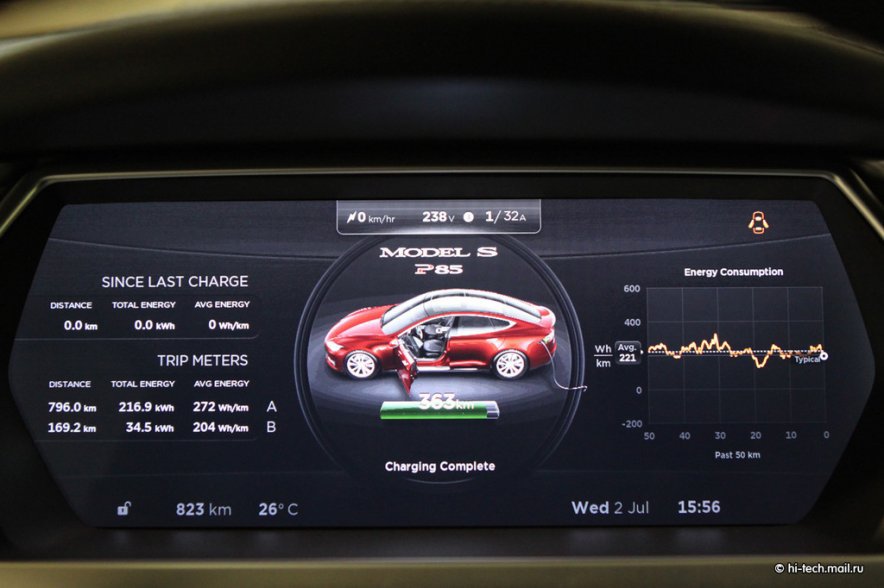
Instead of a mechanical dashboard, a smaller display with a resolution of 1280x480 is used. It displays all the information necessary for the driver: speed, energy consumption, range, distance traveled, temperature overboard. While charging the battery, the instrument display shows voltage and current. When you press one of the buttons on the steering wheel, a menu of several frequently requested functions appears on the right of the display:
- climatic installations for a driver's seat;
- blower fan speed;
- driver screen brightness;
- hatch control (the degree of its opening is measured in percent);
- switching media source.


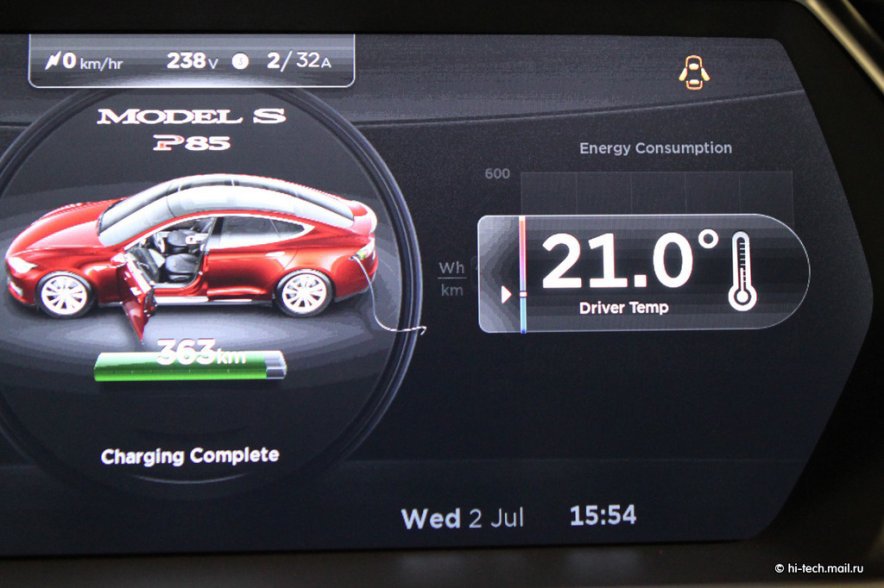

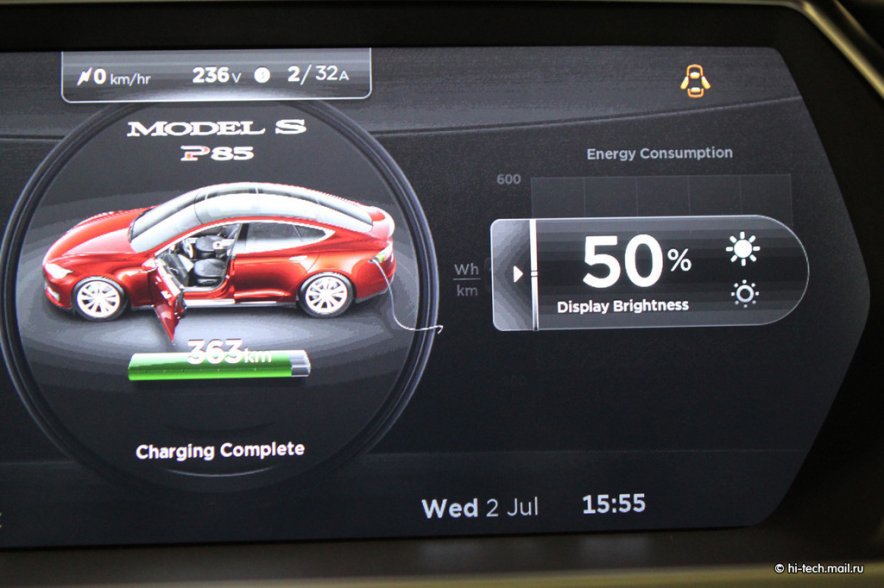

All other settings are made from the main display. The main menu is divided into the following bookmarks categories:
- media player;
- maps and navigation;
- power consumption;
- web browser
- Rear View Camera;
- telephone.

We already mentioned that the image can be divided into two parts and display various information in them. For example, an application for navigation and media player control. Moreover, in place of the media player, video can also be displayed, so passengers will not get bored on the trip. However, like the driver in traffic jams. At the very bottom of the display, a small control panel is displayed, from which you can get to the menu with the technical settings of the car, control the air conditioning and adjust the sound volume.
Let's take a closer look at the contents of all the above tabs on the main menu.
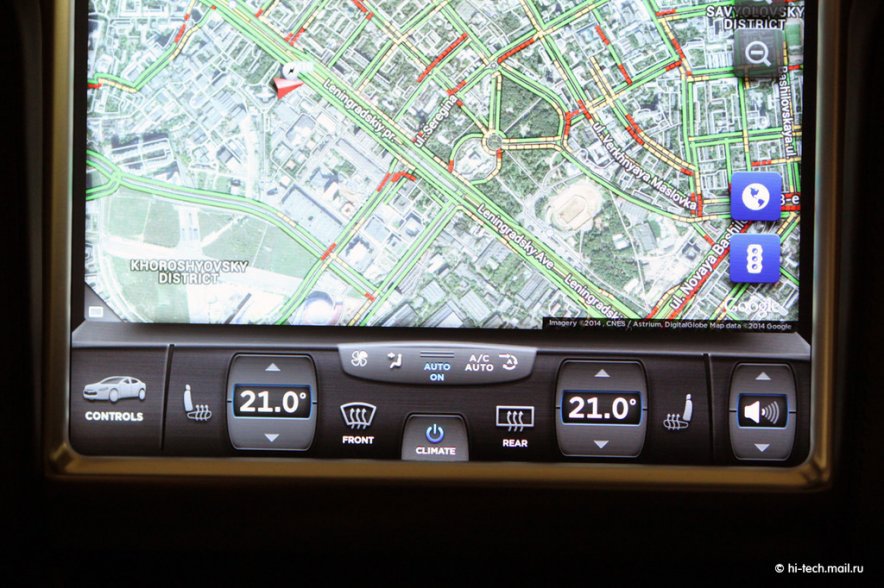
Media player
The media player is very omnivorous; there is built-in support for TuneIn Internet radio. Audiophiles have the ability to adjust the positioning of sound in the cabin, indulge in the Dolby Surround effect and a three-band equalizer.
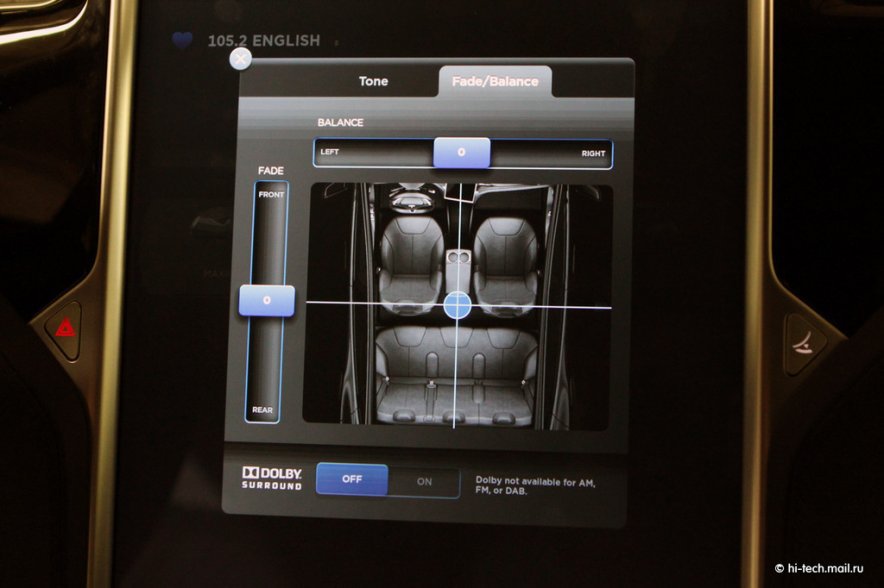

Maps and navigation
The navigation application can be expanded to full screen. Tesla took the path of least resistance and did not begin to reinvent the wheel: the mapping system is licensed from Google. Thanks to this solution, the navigator can display traffic information. Unfortunately, the built-in mobile Internet module does not work in Russia, but you can connect the car to your smartphone using Wi-Fi. It should be noted that the system works fast enough, brakes rarely happen.
Power consumption
For electric vehicles, fueling / charging infrastructure is still a problem. The built-in navigator remembers the location of each charging station that the car has visited. Unfortunately, this is true only for official stations, and, according to the navigator, the nearest one is already in Norway.

For independent charging of Tesla, a separate 32 A line is usually drawn with grounding. With it, you can charge the car in a few hours.
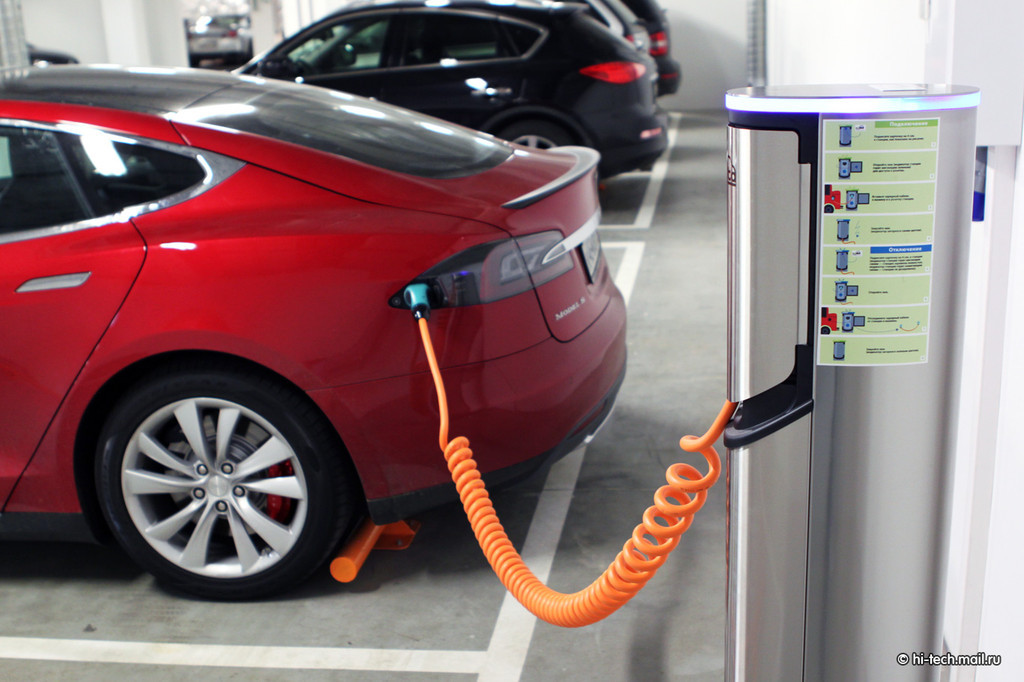
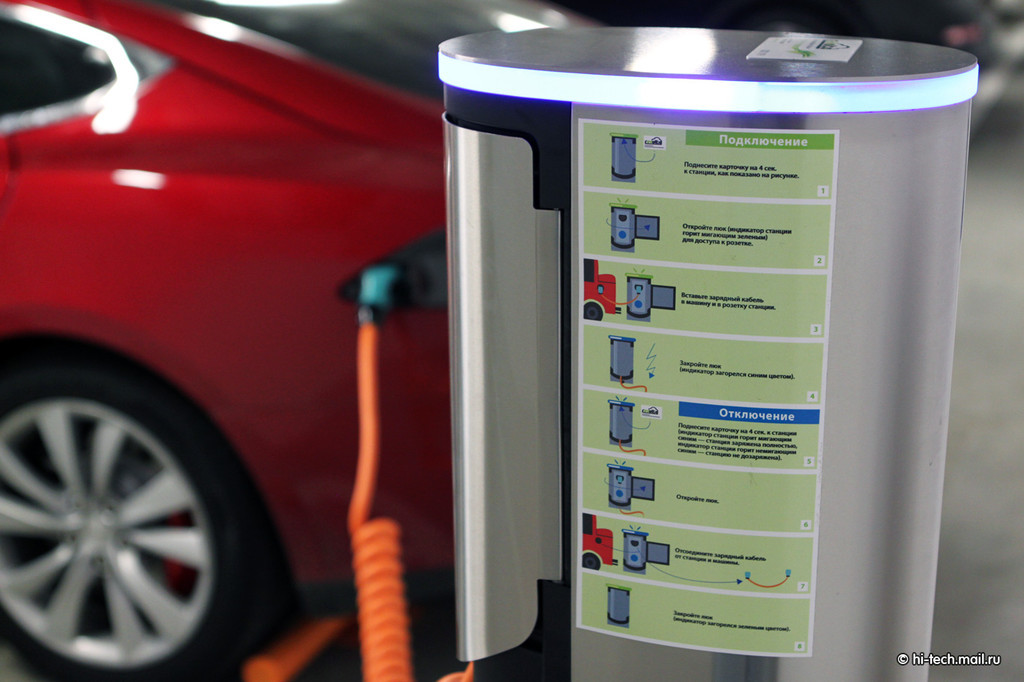
During charging, you can display information from the ammeter on the main display, as well as the calculation of the power reserve. As in the case of cars with internal combustion engines, it makes sense to rely only on average data.

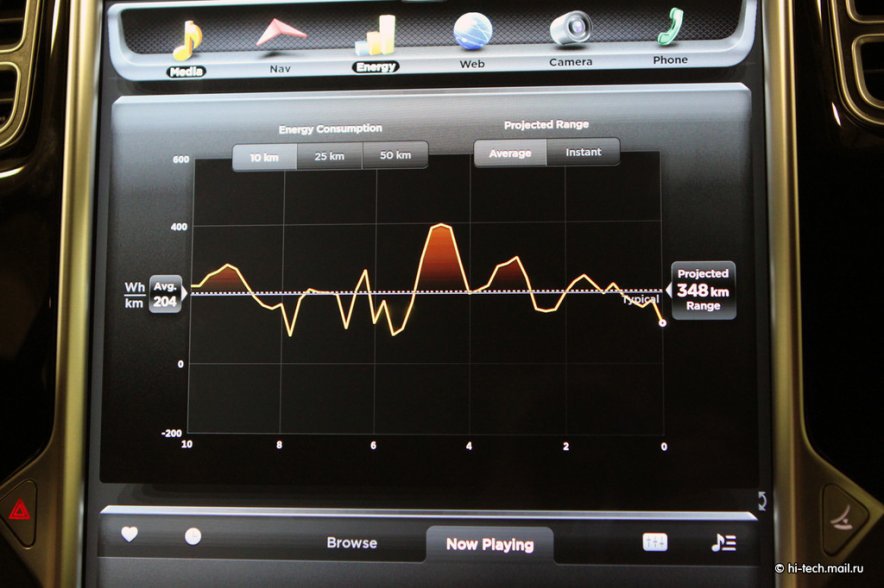
Web browser
By connecting mobile Internet, the driver and passengers of Tesla may not use their laptops, tablets and smartphones to surf.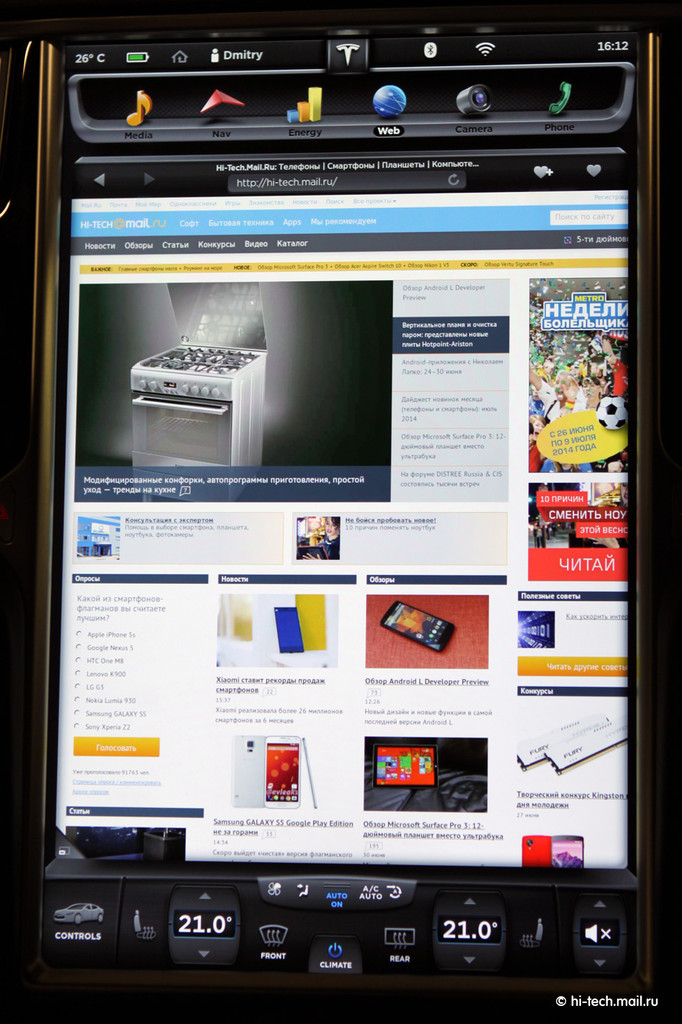

Rear View Camera

Unfortunately, the implementation of this function leaves much to be desired. The image from the camera does not overlap the marking of the movement of the car. There is no need to talk about a circular review.
Telephone
Everything is simple here, this is the usual connection of the phone to the built-in hands free system.Other functions and settings
Through the display you can access the settings for steering, suspension, lighting, sunroof, heated seats and glass.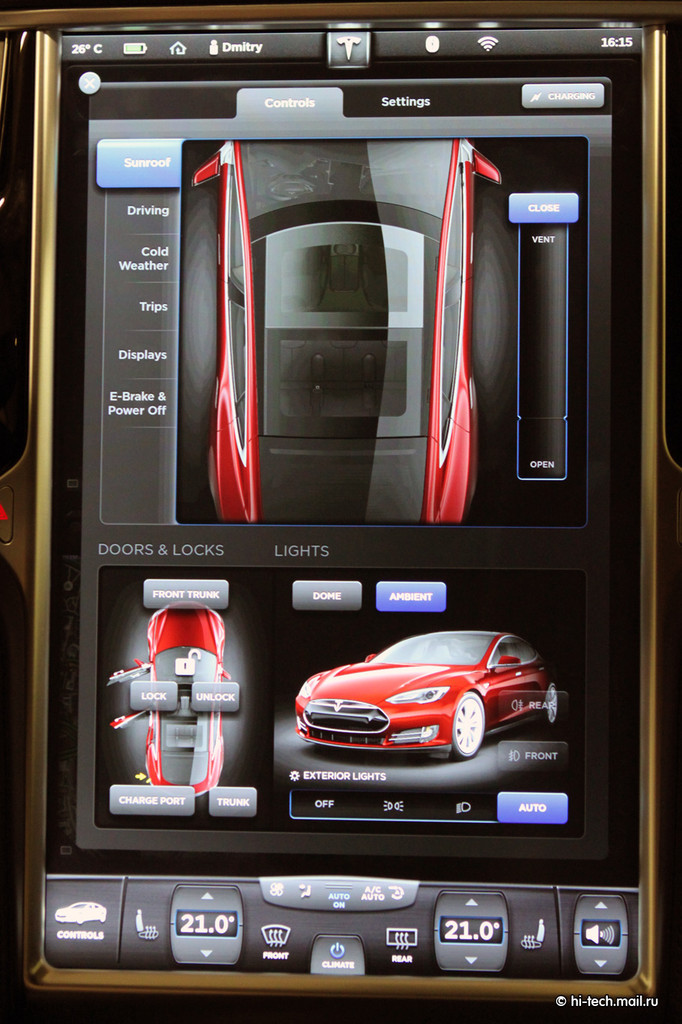




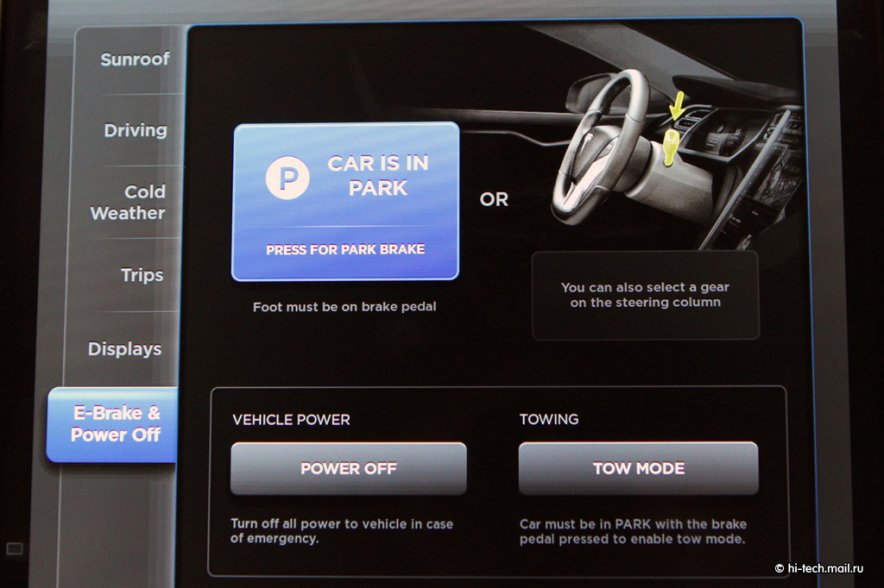



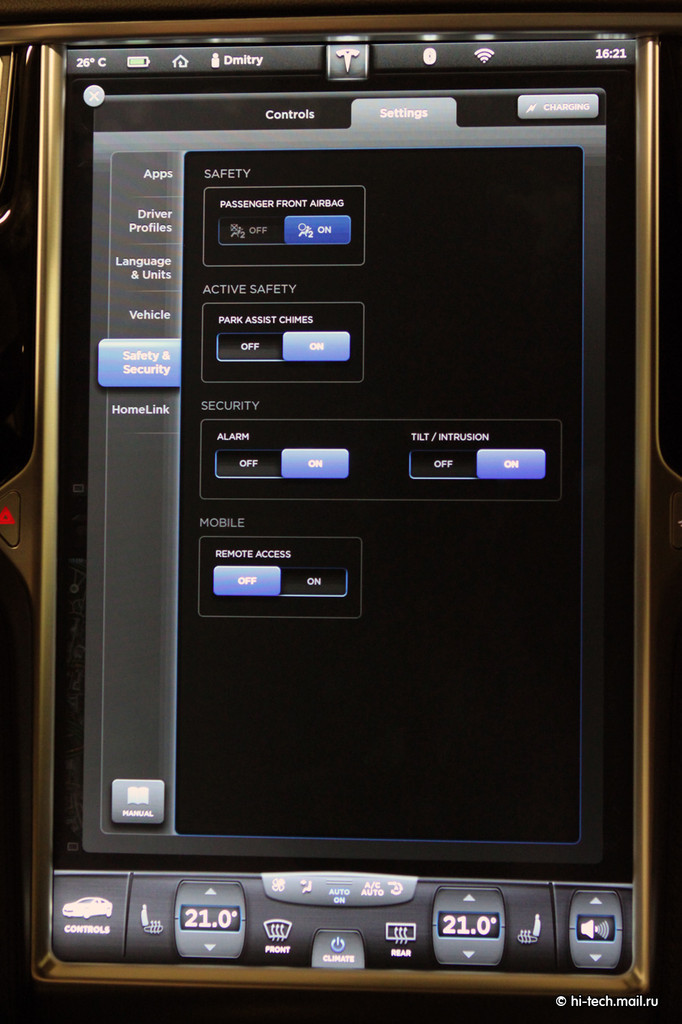
There is a curious function of memorizing up to three keycodes radio codes for opening barriers and gates. It is enough to register them in the radio module of the car, and it will open obstacles by choosing the desired code based on geographic location.
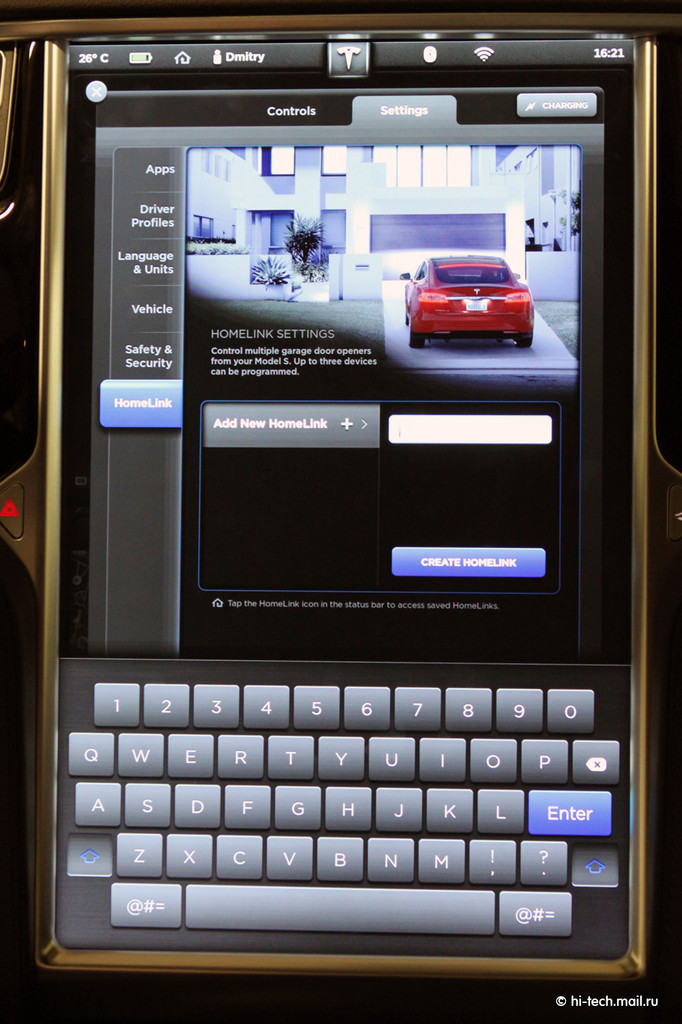
Tesla owners can control some functions of their cars through a mobile application. For example, you can pre-enable interior heating in the winter, view the current status of the battery charging process. True, we do not know anything about the security level of such a communication channel with a car.
